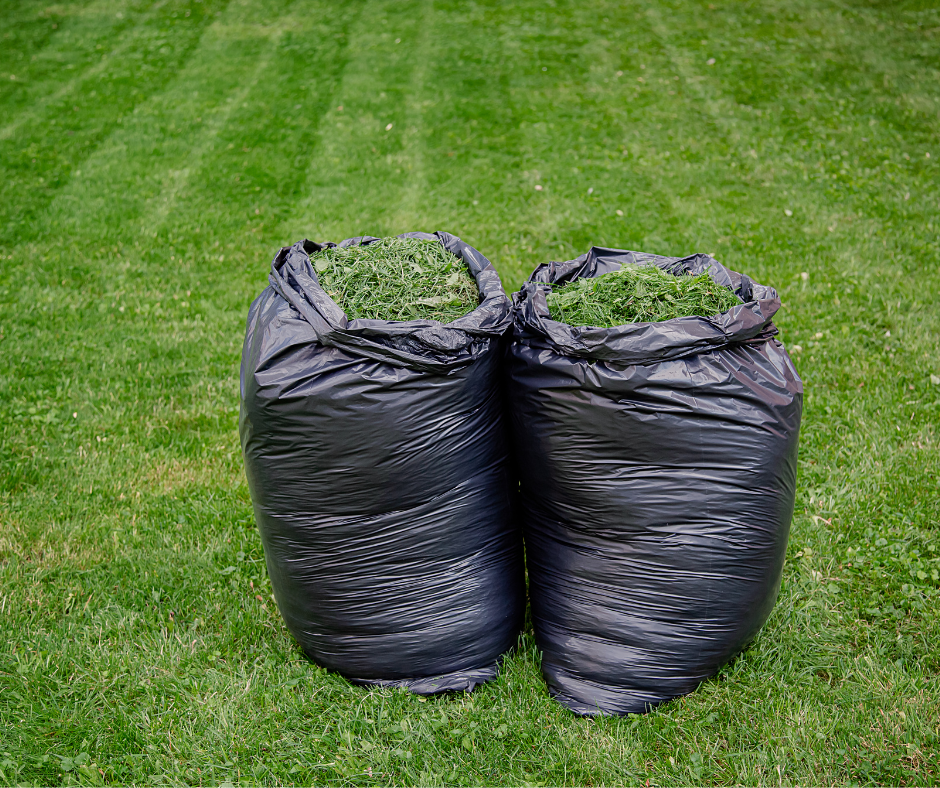Why Should I Collect Grass Clippings or Not!

Most mowing equipment comes with a grass basket or attachment that can enable you to collect grass clippings. I have a grass catcher that sits on the side of my mowing deck, and let me tell you, it’s a real pain in the ass; bumping, banging and scraping things all around my house and yard. I got it stuck on the base of a tree once too! But I understand the purpose of it, and I like the way my lawn looks after a mow, so I’ll keep using it.
There is no right or wrong answer when debating this topic although there are practical implications, aesthetic and functional reasons that delve into the categories of Organic and Synthetic lawn care.
Not Collecting Clippings

Organic lawn care revolves around natural inputs to achieve a similar result to synthetic lawn care. Your lawn has sourced nutrients in order to function and develop. These nutrients are still in the clippings after you mow!
So why if I’m an organic DIYer would I ever want to remove clippings as they are FREE FERTILIZER? I wouldn’t! If my lawn required 5lbs of Nitrogen per growing season and my grass clippings; through the decomposition process to organic matter; released about 2lbs per season, then I don’t need to spend extra $$$$$$$ on bags of Biosolids!
In order to maintain a healthy lawn in this scenario, I would not bag clippings, save that money to buy more tools and then continue to solid tine and topdress frequently. With this practice you are putting in what you are taking out. Managing your organic content through microbial activity, natural thatch decomposition products and top dressing would be important here to prevent excessive thatch buildup.
Functionally there are not any other benefits to not collecting clippings, other than time saved from dumping and bagging, but this might be negated by blowing of grass piles once finished mowing.
Collecting Clippings
Reduced disease and insect incidence, thatch management, clean looking after cut, prevention of hydrophobic conditions whilst aiding the soil in maintaining an open structure are the main benefits from collecting clippings.
Once grass starts to decompose and turn into organic matter humis it goes through a process of holding onto excess water and then becomes gel like at and just beneath the soil surface. Excess water is key for insect development like, webworms, cutworms, armyworms and grubs. Instead of the turf drying out as the day progresses, excessive thatch will hold moisture longer and insects will take advantage of that.
There is also a thing called the turfgrass disease triangle, meaning that there are three elements that need to come together to form a disease. Excessive moisture is involved in one of them and therefore if you remove a water holding source, you are managing your lawn in a way that will prevent the outbreak of disease. Thats a pretty big deal! Imagine reducing dollar spot occurrence just by bagging clippings. It may save you a few dollars in the long run.

The last part about organic matter is the gel like substance. This substance will fill pore space in your soil and will reduce the water holding capacity of your soil. It will also reduce the infiltration rate of water into the soil because some pore spaces are blocked. Additionally, the gel coats soil particles and makes water repel from these particles and as a result induces hydrophobic soil conditions that get extremely hard to rewet once dry.
Organic matter is something that has to be controlled for a healthy lawn. For me the benefit of collecting clippings means that I don’t have to worry as much about these other factors. I know once I mow my lawn it will be clean, and it will provide me with immediate satisfaction. Consequently, spending a couple of extra dollars on fertilizer is ok because this is my hobby. I do use my clippings for composting and moisture retention under my trees and shrubs though. So, in part I am resourceful, and you can be too.
© 2023 LaPageBrands, LLC. All rights reserved.

